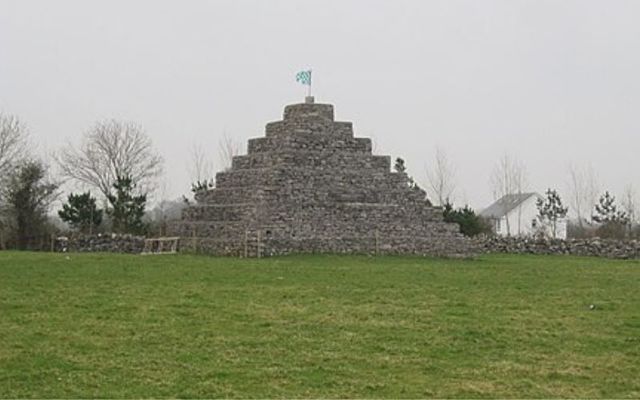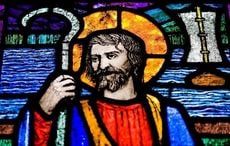The monuments of Neale remain strange landmarks in a town whose history still lies largely undiscovered.
The Quiet Man was decades ago, but Cong has remained a bustling destination scene for those wanting to visit the location of John Ford's epic masterpiece. The surrounding countryside is full of hidden treasures as well, as long as you know where to look.
Head north out of Cong on R345 and you'll come to a small village called The Neale (An Eill). It's a blink-and-you'll-miss-it sort of town, with a few homes and a pub sitting along the main road. There's a church, too, called St. John the Baptised Church & Calvary, and it's there that the little village's Heritage Walk starts.

Are you planning a vacation in Ireland? Looking for advice or want to share some great memories? Join our Irish travel Facebook group.
Follow the path of the walk (and it's absolutely not necessary you do so in order to visit the places along the way, as most are accessible from the main roads), and you'll come first to the Fr. O'Malley Millennium Park.
The park is dedicated to the memory of John O'Malley, one of the major players in the local land league movement. A cornerstone of the community through the famine years, it was O'Malley that saw the building of The Neale's school and church in the 1870s.
Keep going and you'll see the site of the Lord Kilmaine House, and the first of The Neale's iconic follies - expensive structures built for dramatic effect rather than practical purpose. The land was once the home of the first Englishman to settle in Ireland, a map maker and sheriff named John Browne.
His descendent would be Sir John Browne, the 7th Baronet and 1st Baron of Kilmaine, who would leave a lasting legacy throughout the countryside – most noticeably in the form of the follies that lay along the rest of the Heritage Walk.
The Gods of the Neale is the closest to Lord Kilmaine's house, a stone monument that has been carved with images of a unicorn, a griffin, and an angel. The inscription on the monument is where the town gets its name, calling the figures The Gods of the Neale.
The next sits in the middle of a field and, at one time, it was the center of estate life. The Doric-esque temple was once used for family gatherings and teas, a place that the ladies of the house would use as a retreat from the responsibilities of daily life. It lies abandoned and overgrown today, a symbol of an era when there was a massive disconnect between landowners and their tenants.
The last of the follies built by Lord Kilmaine is the most visible – you can see it on your way into town. The massive, 30-foot (9-meter) tall step pyramid is one of Ireland's most unlikely monuments, and no one's quite sure why it's there. One story says that it was built as a memorial to Lord Kilmaine's brother, Sir George Browne. Another story suggests that it was built as a famine relief measure when the lord tasked the locals with gathering up all the rocks and stones that lay scattered across his estate and then use them to build a pyramid.
It's not on the Heritage Walk, but just outside the village is a now unassuming home that once had the eyes of the world on it. The Lough Mask House was once leased by Captain Charles Boycott, whose duties included collecting rent from the other tenants. He took up residence on May 1, 1874, and it was the dawn of the Land War.
When the agricultural and economic crash of the 1870s sent Irish farmers into destitution, the Lough Mask House started sending out eviction notices. The people, backed by Fr. O'Malley, converged on the house in a series of riots that led to the coining of the term “boycotting” and drawing the world's attention to this small piece of land in County Mayo.
Today, the monuments of The Neale remain strange landmarks in a town whose history still lies largely undiscovered, a place of rumors and remains. There are traces of a few Norman castles that dot the countryside, and stories of hosting Charles Steward Parnell, the great uncrowned King of Ireland – making it a great example of just how filled with history every piece of Ireland truly is.
---
Originally from Attica, NY, Debra Kelly is a freelance writer and journalist who has seen most of the U.S. during her travels. Ready for something new, she's now living in the wild hills of Connemara with her husband and plenty of animals. She is a frequent contributor to Urban Ghosts, Listverse and Knowledgenuts.
* Originally published in 2016. Updated in 2023.




Comments